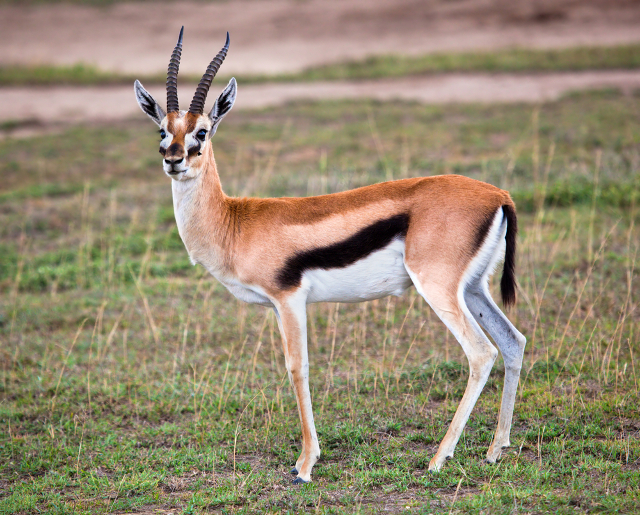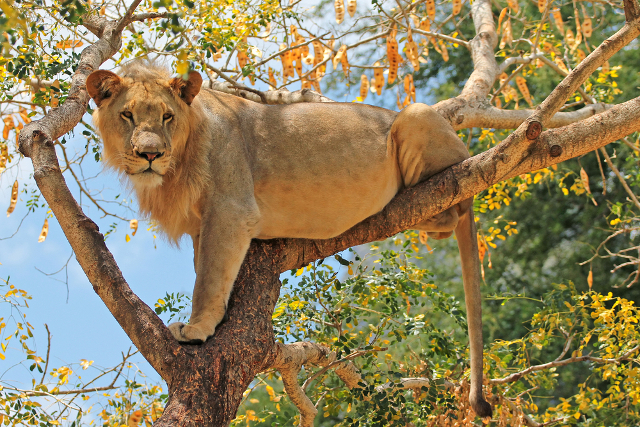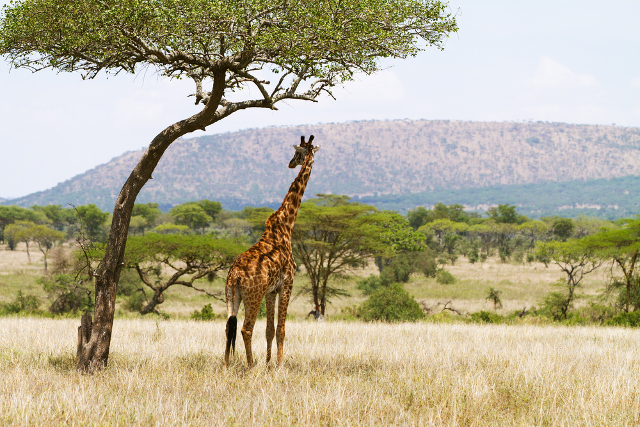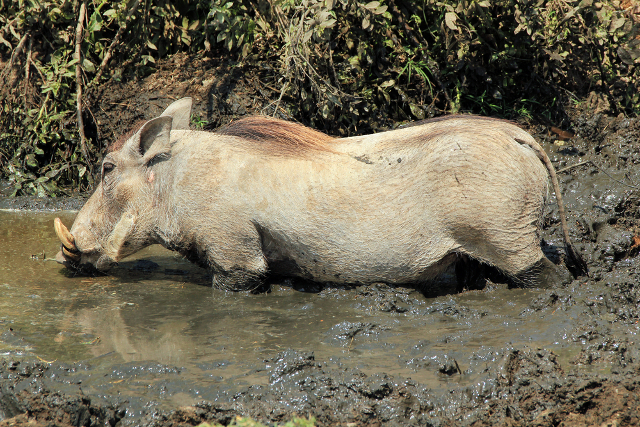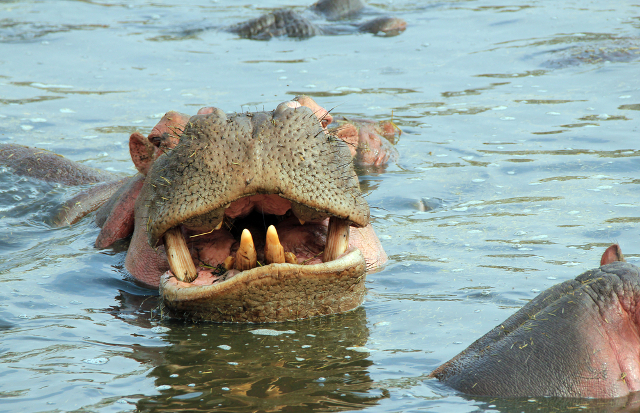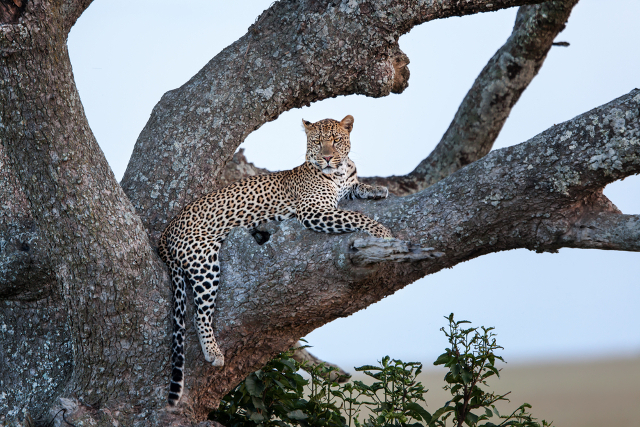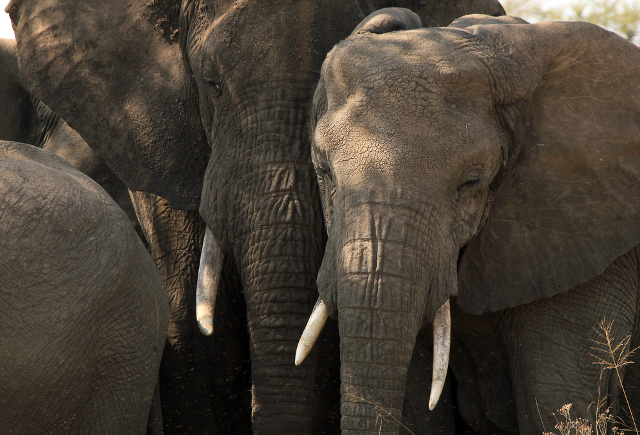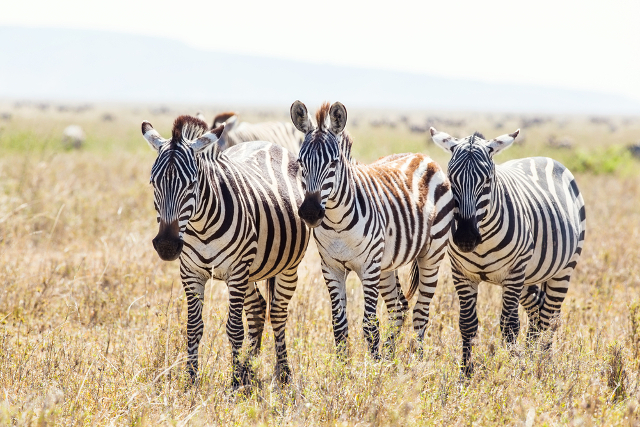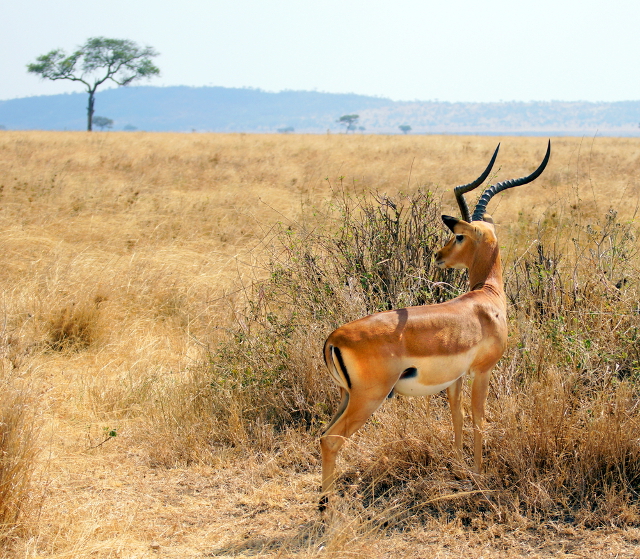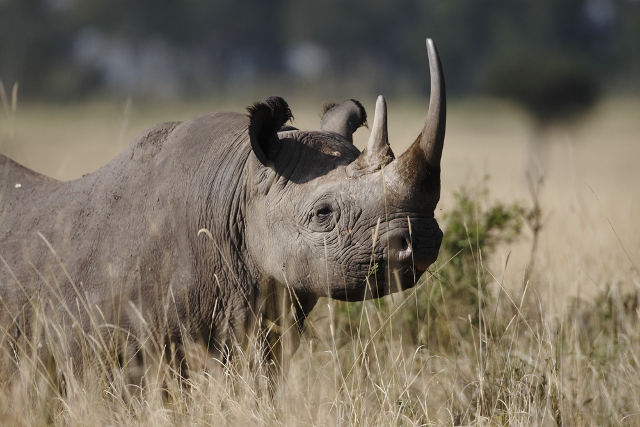No trip to East Africa is complete without seeing the Serengeti eco-system and the amazing animals that roam there. The root word, “Serengit,” is from the Maasai language, Maa, and means “endless plain.” Serengeti National Park is one of the seven natural wonders of Africa and home to the largest terrestrial mammal migration on the planet. The following is a list of some of the most majestic and impressive land animals of the Serengeti plains.
1. Thomson’s Gazelle
One of two gazelles to make our list, Thomson’s Gazelle, also known as “tommie,” is the most common type of gazelle in east Africa. Although they can be found on African savannas throughout the continent, they are particularly abundant in the Serengeti. The current population has declined, but there are still over half a million of them in Africa. Unfortunately for these pleasant creatures, they are the favorite snack of everything from pythons to eagles.
2. Lion
Though it’s commonly known as the “king of the jungle,” in Africa, lions don’t live in that type of habitat. They are more often found on the savanna and in wooded areas. Exceeding 550 pounds in weight, the lion is the second-largest living cat in the world behind the tiger, which they have been known to cross-breed with. Male and female lions are the only members of the cat family to have these distinct gender differences.
3. Giraffe
The giraffe’s long neck earns it the honor of tallest living terrestrial animal on the planet. Giraffes are also quite heavy — almost seven times heavier than lions — averaging 3,500 pounds for a male. The necks of these giant creatures can reach seven feet long, and their hearts can measure up to two feet long. Sometimes giraffes engage in a duel known as necking, where they swing their necks at each other in order to show dominance (and get a date from a female). There are nine different species of giraffes, but the Giraffa camelopardialis is the one commonly found throughout the Serengeti.
4. Warthog
Warthogs aren’t covered in warts, but are so named because of the wart-like protrusions on the side of their heads. They get their nickname, “pig of the plains,” because they are the only member of the pig family that has adapted to living on the savanna. Like the picture above, these somewhat sloppy beasts are often found wallowing in muddy areas of the Serengeti, which helps them keep cool. The warthog population has dwindled over the years, and they are susceptible to death because of droughts in the region.
5. Hippopotamus
Hippopotamuses need water deep enough to submerge in, and in are well suited to an amphibious lifestyle.They are also the third-heaviest land mammal on earth behind the elephant and the white rhino. Despite their large tusks, the hippo’s diet is made up entirely of different grasses, of which they eat close to 100 pounds in a day. Unlike other land mammals in the Serengeti, the hippo’s closest living relative is an even larger creature of the sea, the whale.
6. Leopard
Not to be mistaken for the jaguar, which lives on the other side of the world, the leopard ranks as the smallest of the “big cat” family. Found throughout the Serengeti and beyond, leopards have the ability to adapt to a wide range of habitats, and eat everything from beetles to animals three times their own weight. Even though leopards roam over a large portion of the earth, the African subspecies is considered “near threatened” and is rarely seen outside protected areas.
7. Elephant
Relatives of the now extinct mastodons and mammoths, African elephants are the heaviest terrestrial mammals and can weigh up to 15,000 pounds. Other animals on our list (such as lions and leopards) are inclined to stay away from these large beasts, as they can inflict heavy damage due to their sheer weight and long tusks. Along with their huge size, they also have a large brain and their intelligence is ranked close to the level of primates.
8. Zebra
These striped wonders are actually a horse species, and are found throughout Africa. The particular species that claims the Serengeti as home is known as the plains zebra. There are several hypotheses about why zebras have stripes: one supposes that stripes may help to confuse predators via “motion dazzle,” while another theorizes that biting flies avoid striped animals.
9. Grant’s Gazelle
The second gazelle on our list, Grant’s gazelle is a migratory animal that travels in the opposite direction of the Thomson’s gazelle. This arises from its ability to exist solely on vegetation in waterless areas. In doing so, they face a smaller amount of competition from the other animals of the Serengeti. These gazelles are still common meals for cheetahs, but apparently the fast cats prefer to munch on Thomson’s gazelle. Lucky for them!
10. Eastern black rhinoceros
The black rhino is a cousin of the larger white rhinoceros, and exists in several distinctive subspecies, some now extinct. The eastern black rhino’s range is primarily limited to the Tanzanian side of the Serengeti. Most rhinos are solitary and have a fairly small home range that varies dependent on the season. Though they are not known to eat humans, these horned giants will charge when threatened, so it is best not to approach them.
